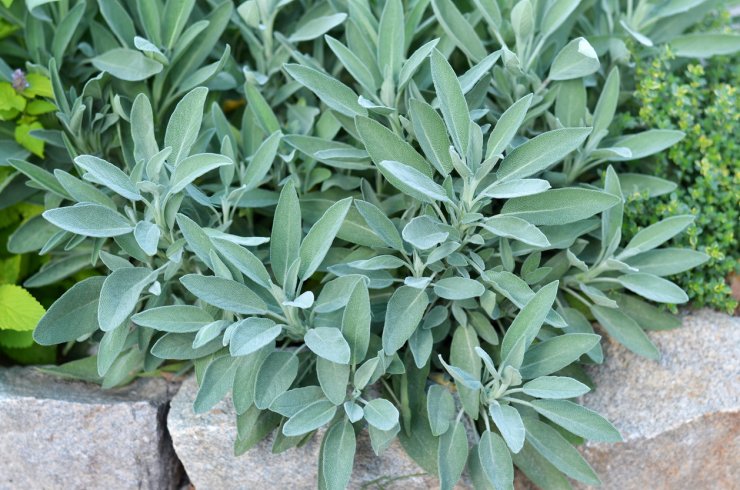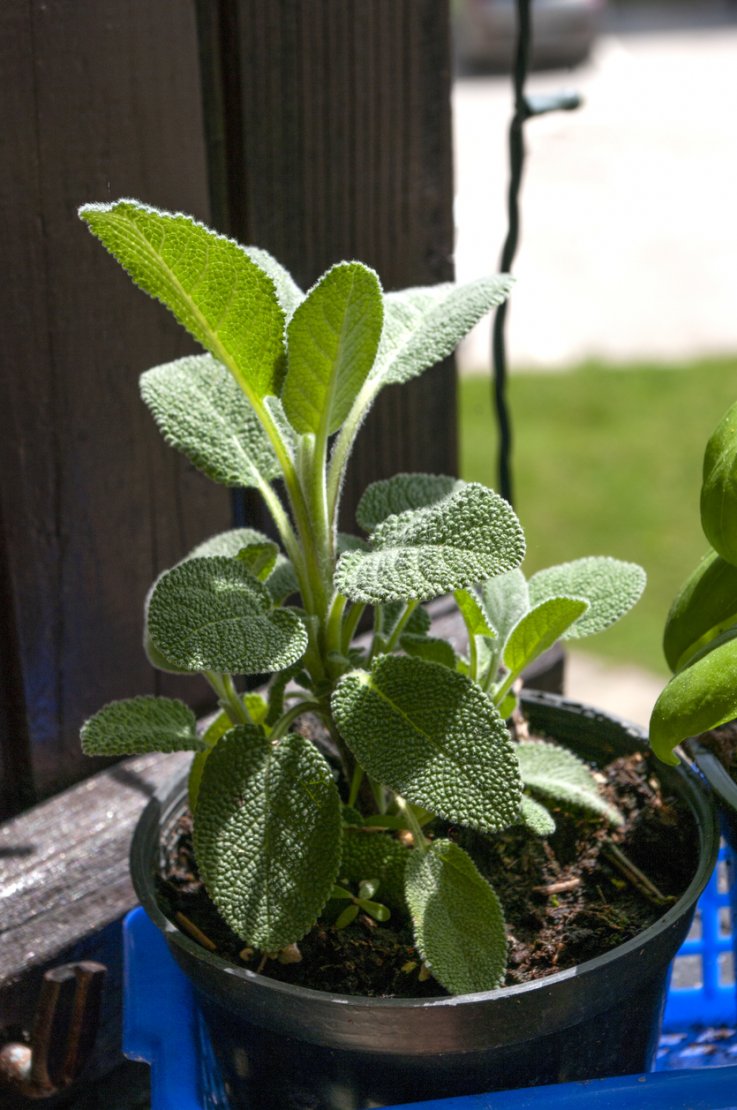
Common sage growing in landscaped open land.
Growing Sage in Open Land
When first planning your herb garden, you should consider the type of land you can tend. If you have a large outside plot of land with the right soil and the right conditions for watering and draining, you might have the ideal situation for planting directly in the ground. If, however, your soil has too much clay or is not the right composition, you might want to consider planting in raised beds or in containers or pots. Converting your open-land plot into a usable garden might involve a lot of time and effort better spent considering raised beds or containers.
Herbs like salvia can be planted along with most of your other vegetables and grow harmoniously. Some gardeners prefer to keep culinary herbs close to the kitchen door—sunlight permitting—for easy access to fresh herbs while cooking. Consider convenience when deciding how and where to plant your sage—a sunny patio filled with pots of aromatic herbs makes a lovely ‘garden’!
Growing in Raised Beds
Creating raised beds for your herb garden can be a lot of work the first time you set up your beds, but having raised beds allows you more control over your growing environment. You’ll discover that watering, irrigation, weeding, and even harvesting are much easier, with items closer to your reach and contained in a space that is more manageable than growing in open land. And once you create your raised beds the first time, subsequent years will be easier.
To create nicely contained raised beds for your sage and other plants, enclose your raised beds with wooden sides at least 8 inches wide—this will help keep the bed together, be tall enough, and make irrigation easier, too. With raised beds, your garden is less likely to contain the seeds of weeds that are often found in garden soil. You’ll minimize the incidence of weeds overall, which will save you time and effort later. Weeding itself is much easier with raised beds, because you don’t have to get down so far on the ground to remove weeds.
- Annual Tip: To optimize the soil in your raised beds, be sure to amend your soil with composting at least once a year—otherwise, your soil can become less productive for your plants.
Growing Sage in Containers or Pots

Potted sage
If you don’t have the space for growing in open land or in raised beds—let’s say you live in an apartment with no land of your own for a garden, for example—you can grow sage in containers or pots on your balcony, porch, patio, or deck.
One great advantage to container gardening is the ability to move plants around more easily to maximize their exposure to the sun.
-
- Tip: If you have trouble moving pots around, because they’re too heavy or too bulky, try putting your pots on slightly raised rolling casters so you can more easily move them around your space.
The potted patio salvia plant is a staple of the home garden—you just have to know the right way to do container gardening for this herb. Fortunately, sage likes well-drained soil and doesn’t need a lot of fertilizer, so you don’t need to constantly hover with the watering can or fertilizer. In fact, over-watering can lead to mildew and too much fertilizer will diminish the plant’s flavor.
With container gardening for sage, you have to use a pot at least 10 inches in diameter. Sage grows very well in containers and can also thrive in a sunny spot indoors, so choose a pot that looks good in your home as well as your yard!
How do you grow your sage—in open land, in raised beds, or in containers? Why do you prefer your method? Please tell us your tips and tricks for creating an awesome herb garden.


 Previous
Previous


What does Ornamental sage look like and can I bake with it?
Ann,
Great question as there are some sage varieties that can do double duty as both ornamental and culinary. Check out this article from the sage collection that explains the 3 primary types of sage: https://foodgardening.mequoda.com/articles/types-of-sage-plants/
We also provide several plant profiles with details about whether they are suitable for culinary purposes. Scarlet Sage and Blue Salvia (Mealycup Sage) are not edible.
https://foodgardening.mequoda.com/plant-profile/scarlet-sage/
https://foodgardening.mequoda.com/plant-profile/mealycup-sage/
But Commom Sage is a great choice for culinary and medicinal purposes.
https://foodgardening.mequoda.com/plant-profile/common-sage/
Happy Gardening!